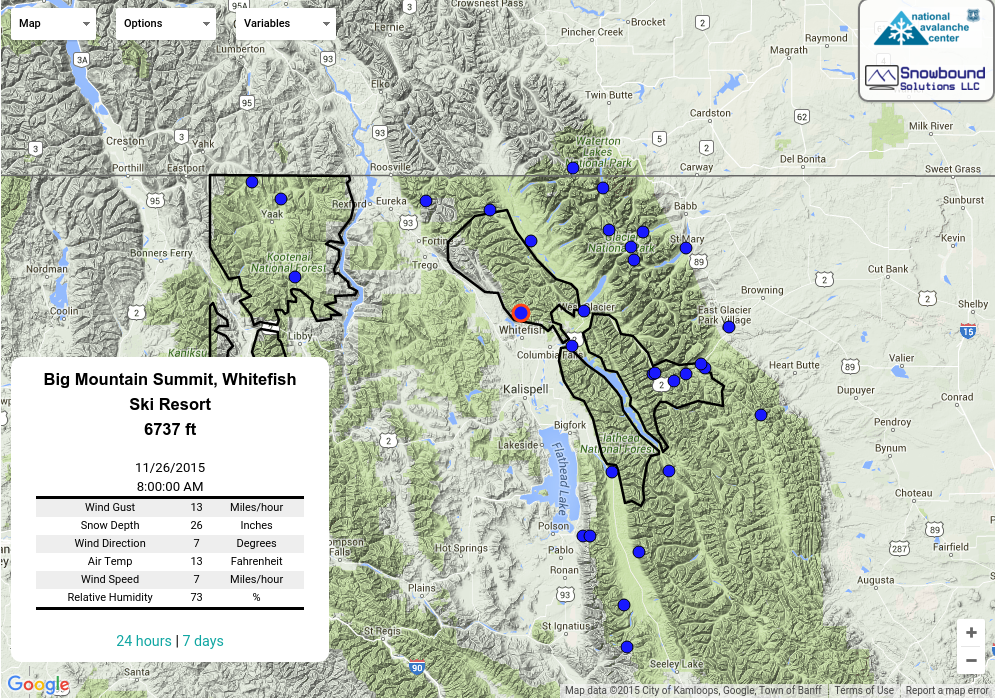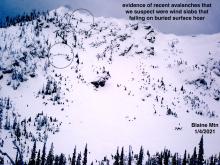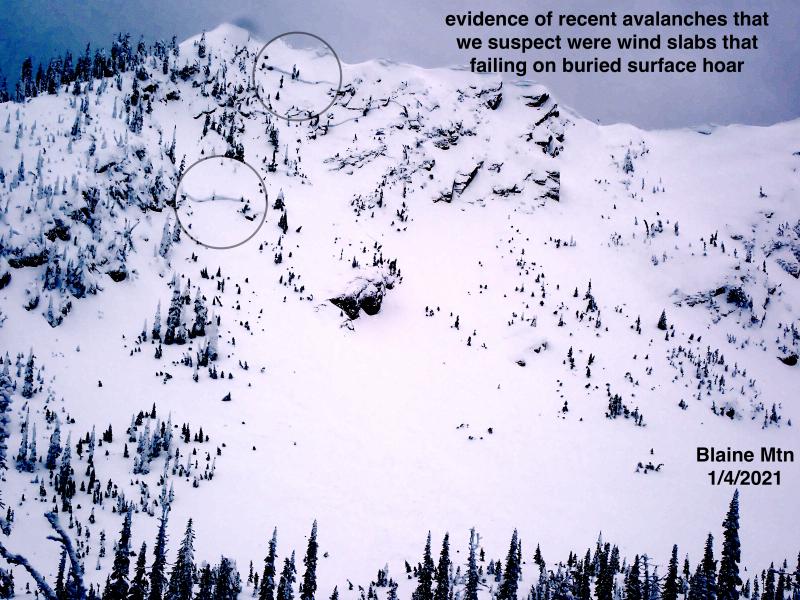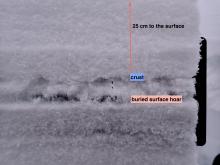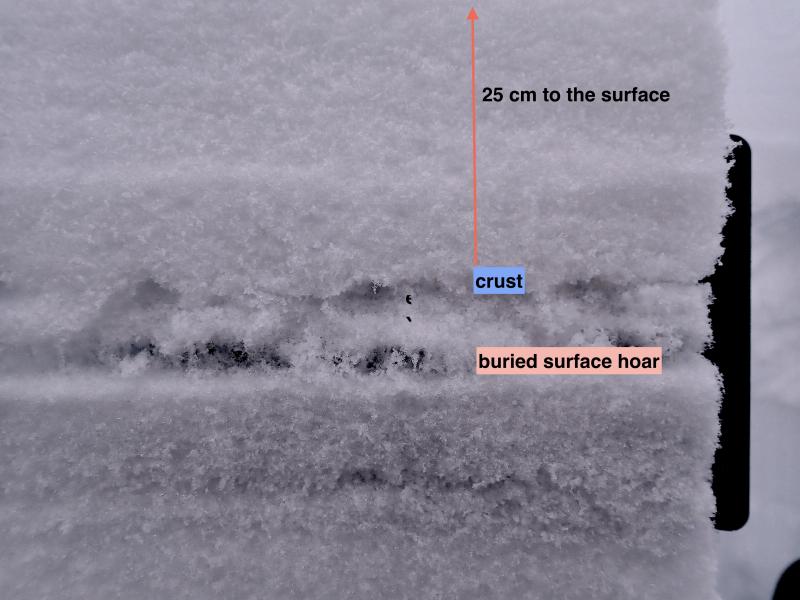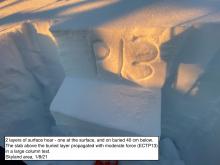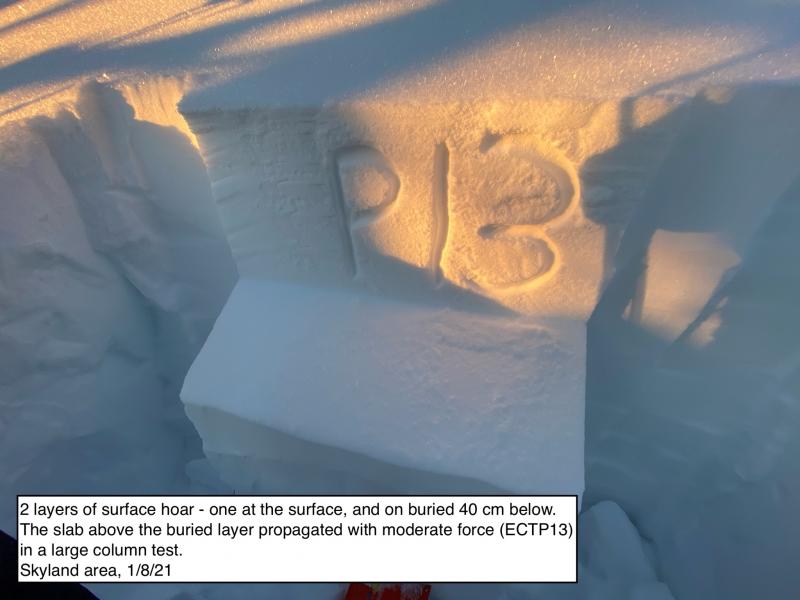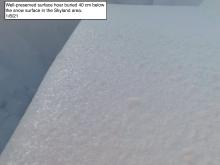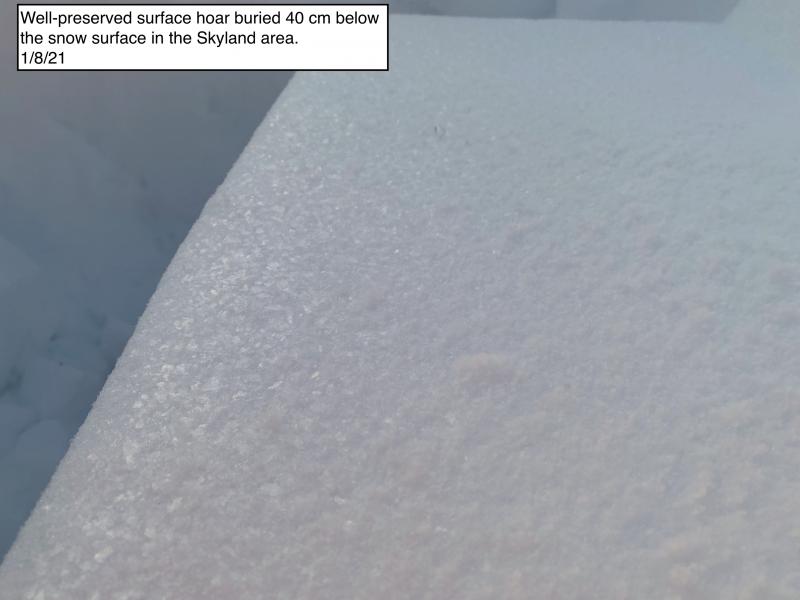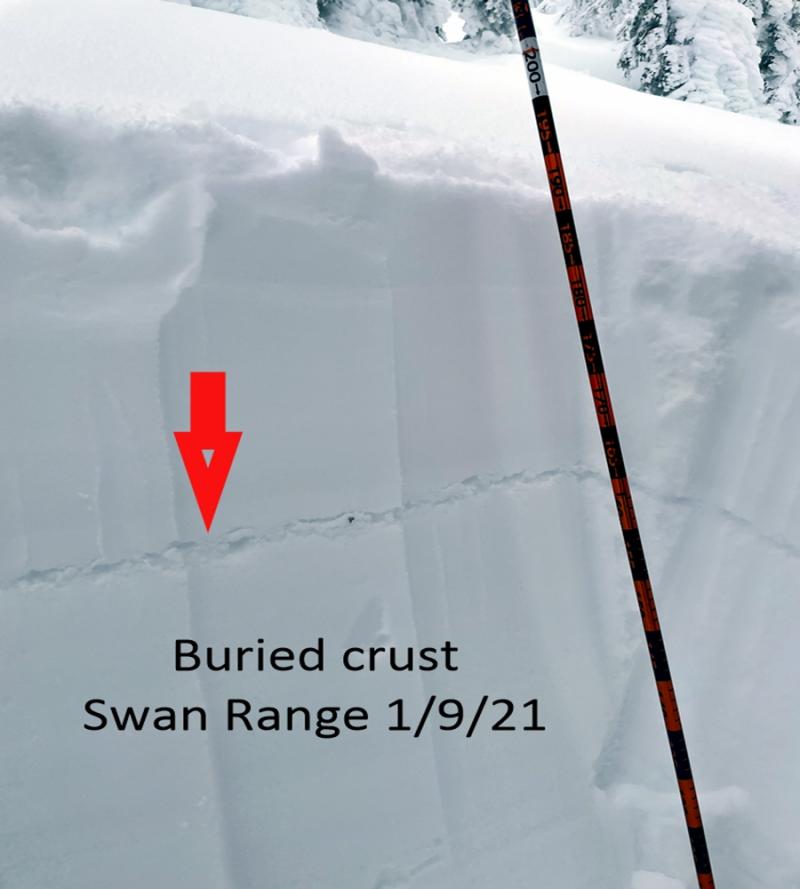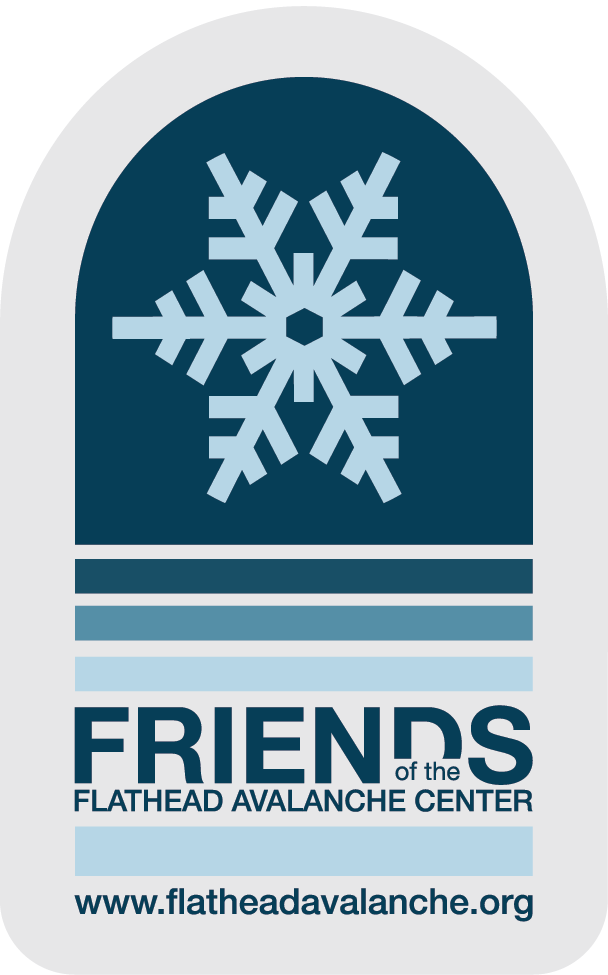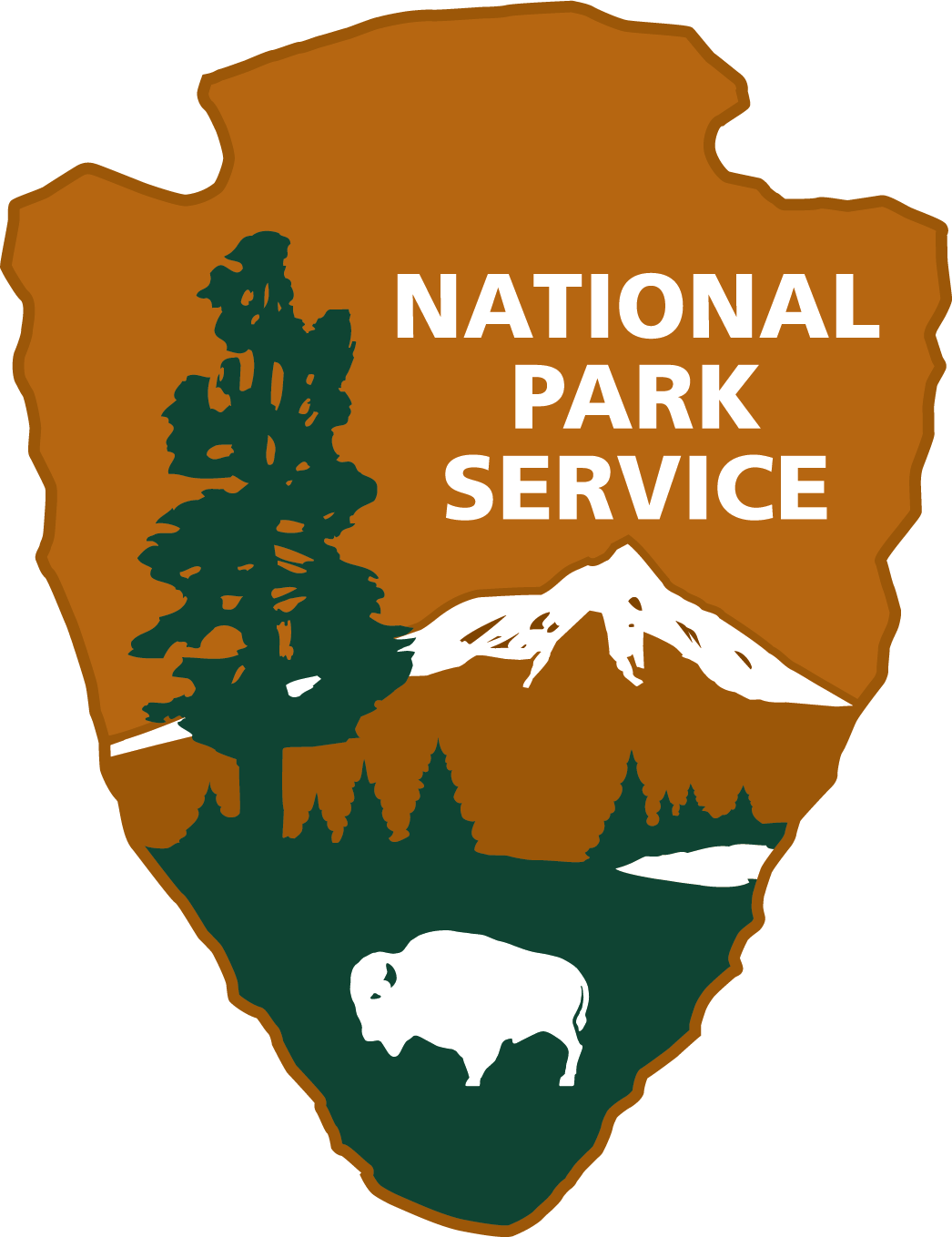| Wednesday | Wednesday Night | Thursday | |
|---|---|---|---|
| Cloud Cover: | Sunny and warm with increasing winds | Rain/snow mix | Rain/snow mix |
| Temperatures: | 36 to 47 deg. F. | 24 to 32 deg. F. | 35 to 45 deg. F. |
| Wind Direction: | southwest | South to Southwest | Southwest |
| Wind Speed: | 11-13 with gusts to 29 mph | 10-12 with gusts to 25 mph | 11-14 with gusts to 29 mph |
| Snowfall: | 0 in. | 0 in. | 0-2 in. |
| Snow Line: |
Whitefish Range
Swan Range
Flathead Range and Glacier National Park
How to read the forecast
The avalanche danger is MODERATE above 6000 feet and LOW below this. The rain crust is key to determining stability right now. Where it is present it will increase stability. Where it isn't found or is breaking down, it is possible to trigger an avalanche on an older persistent weak layer or wind loaded slopes. Today's potential above-freezing temperatures and abundant sunshine may increase the avalanche danger. Pay attention to these changing conditions and adjust travel plans accordingly.

2. Moderate
?
Above 6500 ft.
1. Low
?
5000-6500 ft.
1. Low
?
3500-5000 ft.
- 1. Low
- 2. Moderate
- 3. Considerable
- 4. High
- 5. Extreme
-
Type ?
-
Aspect/Elevation ?

-
Likelihood ?CertainVery LikelyLikelyPossible
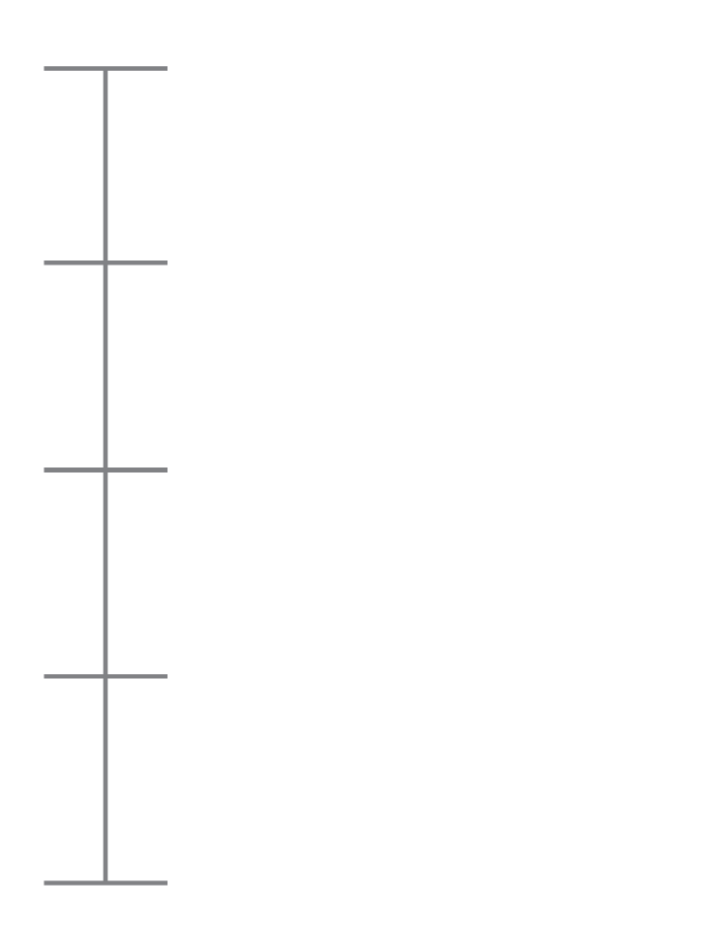 Unlikely
Unlikely -
Size ?HistoricVery LargeLargeSmall

Unusual weather patterns this winter have produced a snowpack that contains a variety of weak layers. The impressive snowfall last week has exacerbated this problem by capping these layers with a thick slab. Stability tests are still showing reactive results around the January 19 crust and, in isolated locations, the depth hoar at the bottom of the pack is still a concern. These weak layers do not always present obvious signs of instability and digging into the snowpack is the best way to determine their location and reactivity. Also pay attention to the snowpack in the mid-elevations. Thanks to last week's storm we now have a thick slab deposited on top of the above-mentioned weak layers. Steep slopes well below tree-line should be approached with caution. Be cautious in locations where the surface crust is weaker.
Above freezing temperatures and abundant sunshine could also affect the slab sitting atop the persistent weak layers. Evaluate snow and terrain carefully and avoid sunny slopes later in the day in order to manage the uncertainty associated with warming and effects on our persistent slab problem.
The rain crust is the key to stability right now. Where it is present, it will improve stability. Where it isn't present or is breaking down you could find instabilities associated with wind slabs, weaker layers deeper in the snowpack and or loose snow avalanches from warming and solar radiation. Because of how widespread the rain crust is and the fact it reached to higher elevations, there is little snow available for transport by the wind. Be cautious in areas where there is no rain crust and that show signs of wind slab development. Pay attention to changing conditions today. Slopes on sunny aspects may become more unstable later in the day due to the abundant sunshine and warming temperatures, especially since temperatures last night were not that cold in many locations. The widespread rain crust will help keep the snow in place, but wet loose avalanches and cornice failures could become a concern in some locations. Look for signs that the snowpack is starting to become unstable due to the warm sunny weather. These include rollerballs, tree bombs, and recent wet loose sluffs on steep slopes, especially near rocks and trees.
Ladies, are you interested in refreshing your avalanche knowledge or looking for a great introduction to avalanche safety? If so, join us at The White Room Mountain Shop, in Whitefish, on Thursday, February 16th at 6:30 pm for a free, engaging, and entertaining 1 hour avalanche awareness presentation. The class includes general information about avalanche hazard, how to avoid it, and proper equipment for traveling in avalanche terrain.
We would like to thank all those who have been submitting observations recently. These observations are invaluable and improve our forecasts. Several observers have submitted reports from across the advisory area documenting the widespread avalanche activity from last week (see our Observations Page). Thank you!
Tuesday: Seth and Adam were in Noisy Basin where they also observed widespread avalanche activity from the February 3-10 natural cycle (Avalanche Observation). They also found a strong and supportable rain crust to over 7000 feet. They found the January 19 crust and associated weak layer above, but it was stubborn to fail and they did not get propagation. Aspects exposed to the sun were definitely impacted, but it was not enough to break down the strong crust at the surface. Other observations from the Swan Face did report some point releases and roller balls caused by the sun and warming temperatures.
Monday: Zachtern and Adam were in Wahoo Creek in the Flathead Range where they observed widespread avalanche activity from last week but no recent avalanches. They reached about 6000 feet in elevation which did not put them above the rain crust. They investigated the large avalanche that ran last Tuesday (2/7) in an unnamed drainage off the north end of the ridge dividing Wahoo and Cascadilla Creek drainages (Avalanche Observation). Guy and Erich were in Lost Johnny in the Swan Range. They also documented the avalanche carnage from last week (Avalanche Observations) but did not see any new avalanche activity. They also noted the rain crust reached up to 6600 feet. They reported light to calm winds with little to no wind-loading in the alpine. In a snowpit at 6500 feet they had propagation with hard force on the Jan 19th crust. Skiers in the Swan range noted the numerous avalanches from last week. One party did have propagation on the Jan 19th crust in an Extended Column test at 6000 feet on a north aspect. Skiers in the Whitefish Range noted the crusts were softening on sunny aspects by 1 pm and also reported surface hoar on northerly aspects. NPS rangers reported numerous avalanches that during last week's cycle in southern Glacier Park.
See below for all observations this season.
In the past 24 hours, temperatures ranged from the mid twenties to 41ºF with winds out of the southwest that averaged 4-21 mph with maximum gusts of 3-40 mph. Currently, temperatures are inverted with colder air settled in the valleys. Above 6000 feet temperatures range from 26-38ºF and winds are mostly from the southwest ranging from 4-19 mph with gusts from 11-40 mph. Today the high pressure ridge remains parked over the region, but will begin to break down by tonight. We should see mostly sunny skies, moderate winds, no precipitation, and temperatures reaching the upper 30s to low 40s.
| 0600 temperature: | 26 to 38 deg. F. |
| Max. temperature in the last 24 hours: | 36 to 41 deg. F. |
| Average wind direction during the last 24 hours: | Southwest |
| Average wind speed during the last 24 hours: | 4-21 mph |
| Maximum wind gust in the last 24 hours: | 3-40 mph |
| New snowfall in the last 24 hours: | 0 inches |
| Total snow depth: | 69-99 inches |
This advisory applies only to backcountry areas outside established ski area boundaries. This advisory describes general avalanche conditions and local variations always occur. This advisory expires at midnight on the posted day unless otherwise noted. The information in this advisory is provided by the USDA Forest Service who is solely responsible for its content.

